Walter Isaacson: We find ourselves in Cambridge, England. The year is 1798, and clerican scholar, Thomas Robert Malthus, is getting ready to publish a controversial piece of writing. It’s an essay that will go down in history as one of the most important pieces of writing ever produced about perhaps the most important topic we face on this planet: how we feed ourselves.
Thomas Malthus was obsessed with population data. He collected figures on births, deaths, age of marriage, and childbearing. He then poured all of that thinking into a piece of writing that featured, quite frankly, a less than catchy title; ‘An Essay on the Principle of Population as it Affects the Future Improvement of Society, with Remarks on the Speculations of Mr. Godwin, Mr. Condorcet, and Other Writers.’
In subsequent editions, Malthus did shorten the title a bit, but the central thesis of his essay stayed the same. The people of planet earth are doomed to an inevitable life of misery and vice. His reasoning for this less than cheery outlook: food supply would never be able to keep up with the increasing demands of an exploding population. As a result, Malthus predicted there would be widespread death caused by famine, war, and disease. Only then would the disparity between population and food supply be brought back into equilibrium. While we still face food challenges, Malthus’ apocalyptic predictions were clearly wrong.
How did we do it, and what did Malthus get wrong? In a nutshell, he failed to account for human ingenuity. I’m Walter Isaacson, and you’re listening to Trailblazers, an original podcast from Dell Technologies…
Speaker 2: Our country has grown from an uncharted wilderness to an area of great wealth and productivity.
[00:02:30] Speaker 3: This is the country of big beefers and vast ranches.
Speaker 4: It is thanks to the hundreds of farmers throughout the country.
Speaker 5: Out at daybreak, breakfast at the chuck wagon.
Speaker 6: The greatest of America’s riches.
Walter Isaacson: The story of agricultural innovation is as old as the story of civilization itself. The earliest evidence of plant cultivation goes back 23,000 years in the so-called fertile crescent of Eastern Turkey, Iraq, and Southwestern Iran.
It was in the same area that cows, sheep, goats, and pigs were first domesticated about 10,000 to 13,000 years ago. Historians refer to this transition from a society based on hunting and gathering to one centered on farming, as the first agricultural revolution. The second agricultural revolution coincided with the beginning of the industrial revolution in 18th century England. There, the population tripled between 1750 and 1850. This was the same nightmare scenario that inspired Thomas Malthus to conclude that population growth would quickly outpace our ability to feed ourselves.
But while the farm population was shrinking as a result of rural population being lured into cities, food production actually increased. The introduction of high yield crops like wheat and barley, and new methods of crop rotation, and the invention of machinery for cutting and threshing grain all led to dramatic increases in productivity.
At the same time in the United States, farmers were beginning to move west looking for more land and a better life. They brought with them the equipment they had used on farms in New England, including plows made of wood and cast iron; but it turned out that what worked well in the east was not so effective on the western frontier. One of the first people to notice this was a young blacksmith who left his home in Vermont and settled in Illinois in the 1830s. His name was John Deere.
Neil Dahlstrom is a corporate archivist for the John Deere Company and a Deere biographer.
Neil Dahlstrom: He, as a blacksmith, would have repaired plows. He would have designed and created farm implements, you know pitchforks, and chains, along with pots and pans, and shoeing horses, and all of those things. He would have been very aware of the struggles that farmers were having plowing Midwestern soil, which was very heavy compared to the soils out East, which tend to be a little sandier. You can imagine out there plowing, you’re behind your hose or your ox. Every five or ten steps, you’ve got to bend over and you’ve got to scrape all the soil off of your plow, and then get going again.
06:00 Walter Isaacson: One day in 1837, John Deere was at the local steel mill when he saw a broken saw mill blade. He had an idea. If soil stuck to plows made of cast iron and wood, what about a plow made of steel? He discovered that soil wouldn’t stick to a steel plow if he could shape it in such a way that would allow the soil to roll off. Getting the shape of the plow just right was a huge challenge for Deere. So too, was finding the steel.
06:30 Neil Dahlstrom: The biggest business challenge was really raw materials. He built that first steel plow. He built two more in 1838, so a whopping total of three in the first two years. But if you’re going to build in any volume, you need raw materials and there wasn’t slab steel available in the United States. John Deere went to Pittsburgh in the late 1840s and ordered the first slab of cast steel ever rolled in the United States. So he was making sure that he was getting the materials he needed, but it took ten years before he could place that order.
Walter Isaacson: There were other business challenges. John Deere was a perfectionist. He was constantly tinkering to get the product just right. He didn’t even take out a patent on his steel plow until 1864, 27 years after he first introduced it. And even then, the patent was not for the actual plow, but the process to manufacture it.
Even though John Deere’s plow was far superior to what came before, early sales numbers were weak. The biggest problem that the company faced was convincing farmers that they actually needed this new plow. Farmers are notoriously resistant to change and despite the steel plow’s obvious advantage, many of them were slow to embrace it.
8:00 Neil Dahlstrom: It was a challenge. Farmers were interesting. It’s the same today. You have these early adopters who just want to adopt the latest technology, and I think there was a lot of that. Then, you have a lot of others who want to go back to traditional methods. There was this concept that steel would poison the soil. It’s something that you see in publications and newspapers that, ‘We’re not going to use this steel plow because it’s going to do long term environmental damage.’ They would this phrase, ‘It’s going to poison the soil.’ You really had this learning curve to get over as well, so that was one of the hurdles that John Deere had to overcome.
Walter Isaacson: John Deere’s steel plow ultimately helped turn the Midwest into America’s bread basket by opening up millions more acres of land for cultivation. But it wasn’t the only innovation to transform American agriculture in the years before the Civil War. Not far from where Deere was manufacturing his plows in Moline, Illinois, another transplanted Easterner was developing a machine that would dramatically reduce the time it would take farmers to harvest their crops.
In the 1830s, reaping grain required farmers to walk through their fields and cut down their crops using handheld scythes. It was a slow and tedious process, so time consuming that farmers weren’t able to seed all their available land because they knew that they wouldn’t be able to harvest their entire crop before winter.
In 1831, 22 year old Cyrus McCormick designed a mechanical reaper on his father’s farm in Virginia. He patented his invention three years later. His promise to farmers was that his machine would pay for itself in one harvest. As with John Deere’s steel plow, many of his potential customers remained unconvinced.
McCormick refused to give up. In 1847, he moved to Chicago and built a factory there to be closer to America’s new agricultural frontier. McCormick took his mechanical reaper to the World’s Fair in London in 1851. There, he won international acclaim. Skeptical Midwestern farmers finally started to come around, and sales went from 500 reapers in 1848 to more than 23,000 a decade later.
Remarkably, Neil Dahlstrom says he’s found no evidence in the John Deere company archives that Deere and Cyrus McCormick actually ever met despite living less than 200 miles from each other. But these two men and their two inventions transformed American agriculture in the years before the Civil War, and turned the American farmer into the envy of the world.
By the turn of the century, American farmers were producing more than enough food supply to satisfy the country’s rapidly growing population, and still have plenty leftover for export. And that food was being produced at lower cost and by fewer and fewer farmers. Farm workers made up about half the American labor force in the 1880s. 40 years later, that percentage had shrunk to about a quarter. Today, it’s less than two percent. Farms were becoming increasingly mechanized and commercialized, producing 100 bushels of wheat in 1890 required 40 to 50 hours of labor. In 1930, it took 15 to 20 hours. In 1990, three hours.
George Kellerman: We have to rethink agriculture as an entire system. It’s not just one piece that’s broken. It’s how do we design a system, both the growing system, the genetics, the automation, the economics, in a way that can actually grow and sustain the industry?
Walter Isaacson: That’s George Kellerman. He’s the Chief Operating Officer and General Partner at Yamaha Motor Ventures and Laboratory, the Silicon Valley venture capital arm of Yamaha Motors.
After working at various tech companies, including Yahoo and Dell, George Kellerman came to Yamaha because the company was interested in investing in robotics, automation, and autonomous vehicles; but applying those technologies to agriculture wasn’t on his or their horizon.
George Kellerman: When we started asking our own engineers, ‘What are some areas that you think that we could apply this technology?’ They often would say, ‘We think this might be applicable to agriculture,’ but Yamaha’s not really an agricultural company. It’s not part of our core DNA. Then, from that, went out and started talking to growers; actually looking at the real world conditions. That’s when it really … When you really look below the covers, it is obvious. To many of the growers, it’s a crisis. It’s just it hasn’t made it into the mainstream. The consumers and the rest of the market are not aware of what the potential pending crisis is. For me, it was almost a calling. It was like okay, this is something I could spend the rest of my life on.
14:00 Walter Isaacson: The crisis that George Kellerman and others see on the horizon is not that different than the one Thomas Malthus saw 200 years ago: feeding our exploding population is a massive challenge.
George Kellerman: If you look globally, the amount of agricultural acreage is shrinking. We’re not creating new agricultural land. If anything, we’re taking prime agricultural land, and we’re converting it into shopping centers and housing tracts. This is a global phenomenon. The human population is growing. The demand for fresh nutritious fruits and vegetables is only going to increase over time. It’s not just a simple solution to say, ‘Well, let’s increase the yield per acre.’ We have to rethink the whole system.
14:30 Walter Isaacson: Look around any grocery store in any city in America today, and you’ll see roughly the same thing: rows and rows of waxy fruits and vegetables attempting to tantalize you with their freshness. Depending on where you live and what time of year it is, most of the so-called fresh produce we find in our grocery stores is actually days or even weeks old, and may have traveled thousands of miles to get there. It’s often doused with chemicals like ethylene or chlorine to preserve freshness. But even so, there might only be a few short days before that lettuce starts to wilt, those tomatoes begin to soften, and those bananas turn brown. But what if there was a way to shrink the 3,000 mile supply chain, or even eliminate it completely?
We’re in Hollis, a middle class neighborhood of Queens just outside of New York City. Towering over the tracks of the Long Island Railroad is a massive five story, 60,000 square foot building. In the early part of the 20th century, this building was the headquarters of the Ideal Toy Company, the largest doll making company in the United States. Popular dolls produced here included Betsy Wetsy, Shirley Temple, Patti Playpal and tiny Thumbelina. Now, inside this massive building, something entirely different is manufactured: lettuce.
Jenn Frymark: My name is Jenn Frymark. I am one of the owners of Gotham Greens, and I also am the Chief Greenhouse Officer. I oversee all the growing operations and greenhouse design for the new locations.
Walter Isaacson: Jenn Frymark is a farmer who never leaves the city. She’s one of a growing number of people who believe that urban agriculture will play an important role in the future of food. Gotham Greens, the company she co-founded in 2009, currently operates four giant hydroponic greenhouses; three in New York City, and one in Chicago. Their proximity to major urban centers that they feed is the key to their success.
Jenn Frymark: So right now, we’re focused on all leafy greens. We have a butter head, a romaine, a medley mix, an iceberg. We have arugula. We have basil. We’ll run some as wholesale cases, some as retail packaging in the clamshells that you see in the grocery store.
17:30 Walter Isaacson: Right now, less than one percent of the more than eight million pounds of lettuce grown in the United States every year is grown indoors; but that could change. Tomatoes were once exclusively an outdoor crop. Now about 70% are grown indoors. During the winter months, about 90% of leafy greens in American grocery stores come from the area around Yuma, Arizona and California’s Imperial Valley.
About 1,000 trucks leave Yuma every night for points North and East. Each truck carries 1,000 boxes of produce. The water to grow all of that produce comes from the Colorado River, but a massive and prolonged drought is putting the long term viability of America’s Salad Bowl into question.
Jenn Frymark believes Gotham Greens hydroponic rooftop greenhouses can grow leafy greens more safely, more sustainably, more efficiently, and even more economically than in the field.
Jenn Frymark: With us having the extended growing season, we can do 30 times the production of what a field grower can do. It really is an incredible amount of production. Then, we also can be right next to where the customer is and deliver locally, instead of having it shipped across the country and take seven or eight days to hit the store.
19:00 Walter Isaacson: This idea of urban agriculture has the potential to radically disrupt traditional farming in the US, and around the world, putting food closer to people. It’s estimated that by mid century, about 70% of the world’s population will be living in cities. The closer those urban dwellers can be to the source of their food, the less fossil fuel will have to be burned feeding them. The less food will be wasted, and the more safe and secure their food supply will be.
But greenhouses aren’t the only way people are now growing crops indoors. David Rosenberg is a co-founder and CEO of AeroFarms, which bills itself as a world’s leader in vertical farming.
20:00 David Rosenberg: Vertical farming is a relatively new industry. It’s layer upon layer of growing plants. We grow without sun, without soil.
Walter Isaacson: AeroFarms currently operates nine vertical farms, including one inside a former steel mill in Newark, New Jersey. At 70,000 square feet, it’s the largest vertical farm in the world. Inside are 250 different types of herbs and greens growing in trays stacked 36 feet high and 80 feet across. Instead of soil, plants are grown on reusable cloth. Instead of sun, the plants get exposed to rows and rows of specialized LED lighting. Every stage of AeroFarms’ process is done with the aim of producing as much food as possible while minimizing negative impact on the surrounding environment.
21:00 David Rosenberg: Vertical farming enables local food production at scale. Here, we’re able to grow a tremendous amount of plants in a relatively small footprint. Compared to a farmer in the Northeast United States, our productivity is about 390 times higher than a field farmer.
Walter Isaacson: Vertical farming done at scale has the potential to address some of agriculture’s most pressing challenges. It dramatically reduces food waste, uses about 95% less water than field farming, 50% less fertilizer, and no pesticides. That significantly reduces the risk of E Coli and other health problems caused by contaminated water.
Vertical farming also requires far fewer workers than field farming. AeroFarms currently has about 130 employees. Only a handful of them have ever actually done conventional farm work. Among the rest are electrical and lighting engineers, plant physiologists, microbiologists, data scientists, and software programmers.
David Rosenberg believes this coming together of agriculture and technology is just one indication that we may be on the cusp of a historic change.
22:30 David Rosenberg: History will tell, but it does feel like it’s historic. You have record breaking amounts of money going to the space, companies coming to the space. We probably, as we speak, have 15 resumes from MIT alone. It shows the thought leaders, really smart, young people are wanting to go in the space, which is a reverse chorus where for a long time, it’s been hard to consider where the future farmers are because it’s typically been like a family business that’s passed on generation to generation.
Now, we have young, smart people wanting to go to companies like AeroFarms. It does for a multitude of reasons, it does feel like this is a historical moment to help illustrate how technology and agriculture really can come together to solve broader problems.
Walter Isaacson: The coming together of agriculture and technology is not just happening indoors.
23:30 Rob Leclerc: By and large, precision agriculture is using digital technologies to make precise measurements and then use digital technologies to do farming in a very … we’ll call it precise way.
Walter Isaacson: That’s Rob Leclerc, the CEO and co-founder of AgFunder, a Silicon Valley venture capital platform that invests in food and agriculture technologies. Among the technologies that are attracting a lot of attention these days are those that promote what has become known as precision farming. It starts with the acknowledgement that not every field and every crop grows the exact same way. Then, it applies sophisticated hardware and software to ensure maximum efficiency.
Rob Leclerc: This sort of precision piece really starts with measurement and getting very, very fine grain measurement, and then using that data in some sort of actionable way to make better use of the resources that you have; recognizing that you don’t have to plant in a homogenous way. You don’t have to apply fertilizer in a homogenous way. That you could be very specific about how, or where, and when you apply things.
Walter Isaacson: All this optimization of field crops doesn’t solve one other issue; which is that there are fewer farmers. In California, the nation’s leading agricultural state, one of the biggest drivers of change is a rapidly shrinking supply of farm workers.
George Kellerman believes there’s only one solution to that problem. Contrary to what many people believe, it’s not increased immigration or even higher pay.
George Kellerman: The solution is ultimately going to be automation and robotics. The demographic shift is very clear. Workers are leaving agriculture. They’re not coming into the field. The existing workers are aging out. That trend is not going to change any time soon. It’s not a function of how much money they can make, either. The solution, even to just maintain the current level of agriculture production, it’s going to require robotics and automation.
25:30 Walter Isaacson: Robots are already making their way into farmers’ fields in ways that most Americans can probably not even imagine. Take apples, for example. Billions are harvested every year, but the peak harvesting season lasts only around two months. Without workers to pick them, those apples will never get to market and will go to waste. Which is why, over the next few years, more and more of them will be picked by robots.
George Kellerman: Yeah. Actually, there’s a company that we invested in called Abundant Robotics. They are developing a robot that can harvest apples autonomously. It uses computer vision systems to identify whether the apple is ripe, and if it is, then it moves a robotic arm into place and it removes it actually with a vacuum. It sucks it off of the tree. It can work 24 hours a day. It doesn’t get tired. You don’t have to pay it overtime.
A lot of the changes I believe are going to come in the form of the vision systems and the software that are running it, whether that’s machine learning, artificial intelligence. It’s not enough to just identify that’s an apple, or it’s red; but is it ripe? Does it have disease? Is it misshapen? Is there a bruise or damage? Then you start getting to higher levels of actually mimicking what a human would do in the field.
27:00 Walter Isaacson: Robots are one way of addressing the problem of food waste. If you can pick fruits and vegetables more quickly and efficiently, you’ll increase the chances that the produce will end up in someone’s stomach rather than in a landfill. According to the Department of Agriculture, about 40% of all the food grown in the US never gets eaten. That’s about 133 billion pounds of food wasted each year, or about 161 billion dollars worth.
The challenge over the next few decades is very clear: increase food production to feed a global population that’s expected to grow by more than two billion people. We’ll get there by reducing food waste, improving distribution, and ensuring that the food we eat is safe. Precision farming, robots, urban agriculture are just some of the areas that farmers, engineers, scientists, technologists, and investors are exploring to meet that challenge.
We’ve been here before. In the 19th century, John Deere’s steel plow and Cyrus McCormick’s thresher helped overcome Thomas Malthus’ dire prediction of mass death caused by a food supply that couldn’t keep pace with population growth. In the 20th century, genetic engineering and chemical fertilizers help prevent mass starvation in the developing world.
But In the 21st century, we can’t simply continue on the path we’ve been on and hope it all works out. We need to correct some of the mistakes of the past. We have to grow healthier, safer food more sustainably, in a way that doesn’t harm our air, land, and water. We have perhaps been too slow to recognize the magnitude and the urgency of the problem. But now, some very smart people backed by some very big money, and armed with all the latest technology are fully engaged in the struggle and striving for solutions.
I’m Walter Isaacson, and you’ve been listening to Trailblazers; an original podcast from Dell Technologies. If you want more information about anything you’ve heard on today’s show, you can head to our website at DellTechnologies.com/Trailblazers. This marks the end of our season, but fear not we’ll be back in the fall with all new episodes of Trailblazers. Until next season…thanks for listening.
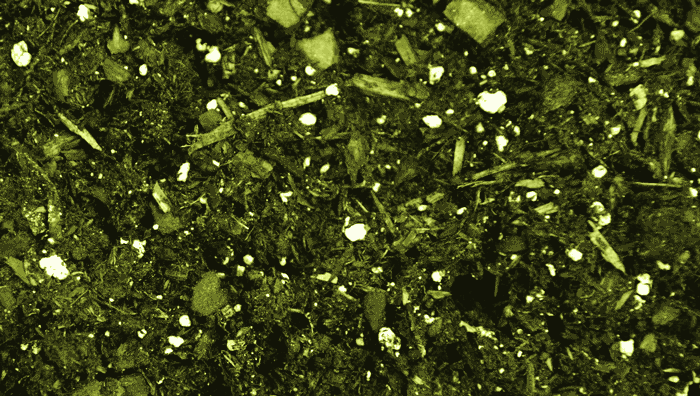 A brief history of harvest.
A brief history of harvest. Agriculture grows up.
Agriculture grows up.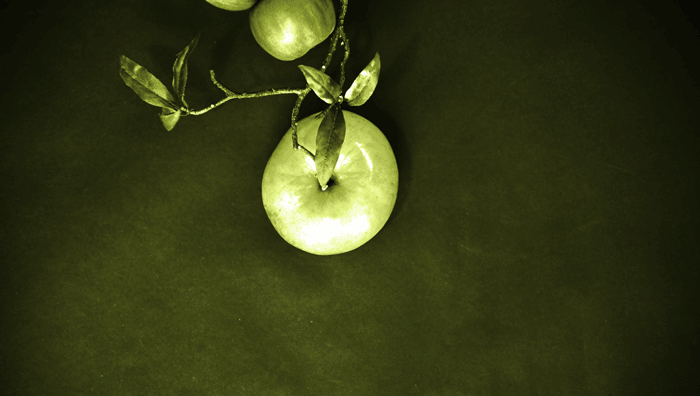 Automation in the field.
Automation in the field.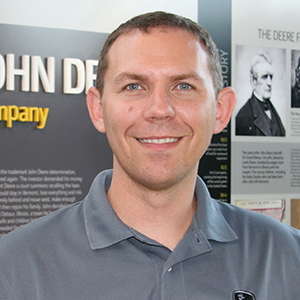 Neil Dahlstrom
is the Historical Archives Manager at John Deere and the author of The John Deere Story: A Biography of Plowmakers John and Charles Deere.
Neil Dahlstrom
is the Historical Archives Manager at John Deere and the author of The John Deere Story: A Biography of Plowmakers John and Charles Deere.
 Rob Leclerc
is the CEO and Cofounder of AgFunder, an online venture capital firm investing in food and agriculture technologies.
Rob Leclerc
is the CEO and Cofounder of AgFunder, an online venture capital firm investing in food and agriculture technologies.
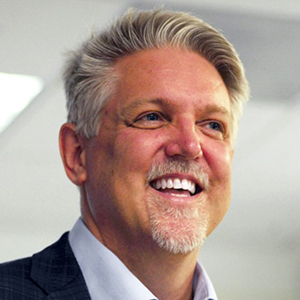 George Kellerman
is a founding member of Yamaha Motor Ventures & Laboratory Silicon Valley where he leads global AgTech initiatives, and is focused on in-field agricultural automation and robotics.
George Kellerman
is a founding member of Yamaha Motor Ventures & Laboratory Silicon Valley where he leads global AgTech initiatives, and is focused on in-field agricultural automation and robotics.
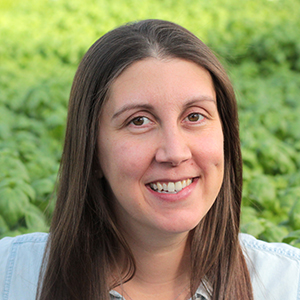 Jenn Frymark
serves at the Chief Greenhouse Officer at Gotham Greens, a worldwide pioneer in urban, indoor agriculture. Gotham Greens operates over 170,000 square feet of greenhouses.
Jenn Frymark
serves at the Chief Greenhouse Officer at Gotham Greens, a worldwide pioneer in urban, indoor agriculture. Gotham Greens operates over 170,000 square feet of greenhouses.
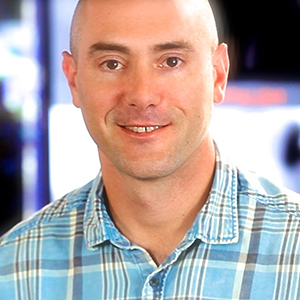 David Rosenberg
co-founded and leads AeroFarms, a clean-technology company that builds and operates advanced vertical farms in urban environments.
David Rosenberg
co-founded and leads AeroFarms, a clean-technology company that builds and operates advanced vertical farms in urban environments.